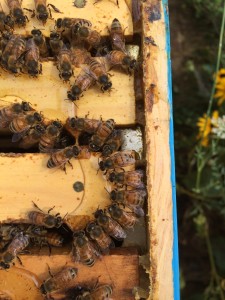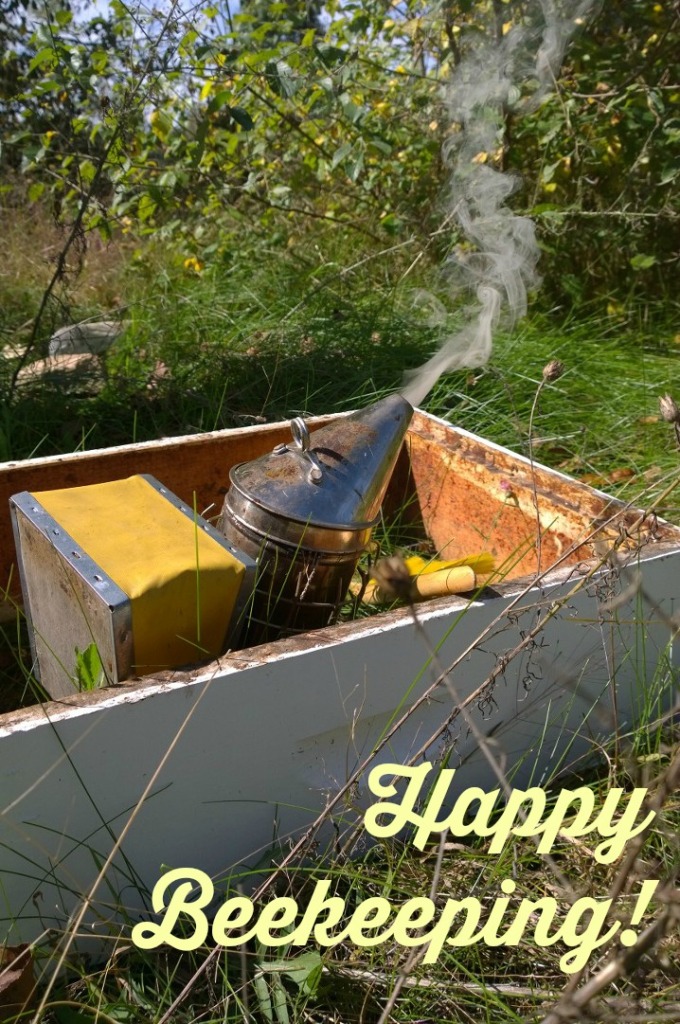What follows is a backyard beekeeper’s Q & A about honey collection. My family likes to raise bees because we like bees. The honey is a great byproduct of the hobby, but it is not the reason we do it. If you are interested in selling honey or comb products, I am not the person to talk to. If, however, you keep a few hives and/or are new to beekeeping and want a few jars for yourself and maybe a few for some friends and family, then you might find this helpful.
Why do bees make honey?
Quite simply, bees make honey to eat. Honey is their food source when they are hunkered down during the cold winter months. It’s full of sugar and nutrients so it provides plenty of energy and substance to keep warm and stay satisfied when there is no nectar available.
When should I extract honey?
Generally, the time to extract honey is following a substantial nectar flow. It’s ready to extract when it’s cured and capped. At our house, we abide by two major nectar flows. HERE is a great website that estimates nectar flow in Michigan. The first concludes around the beginning to mid-July. Many fruit trees/bushes have finished blooming, clover is out in full force, milkweed has bloomed, the first alfalfa cut is done – this can be a good time to make your first extraction.
The second major nectar flow takes place July-September. During this time, bees feast on sunflowers, thistle, goldenrod, and aster, amongst others. Many beekeepers extract again in the fall. Some only extract in the fall. We raise bees for bees, not honey, so we only extract after one of these flows, not both. Of course, many factors affect when and how much we extract: number of hives, strength of the hive, amount of capped honey frames, and quality of the weather that season. This leads us to the next question…
How much honey should I extract?
This is personal preference and it really addresses the philosophical question of why you raise bees. There are many who extract honey from most or all of the capped frames. These keepers then must feed their bees all winter and into spring to ensure survival. You can split the difference, take some and feed in the spring, or you can leave all the honey (although, you’ll probably be safe to still feed in the spring). If we have multiple strong hives, we extract enough honey to keep some for ourselves and maybe sell or give some away to friends and family. I like a hobby that pays for itself, so selling a little honey gives us some money to buy nucs in the spring.
I almost always take a little honey for myself (I figure the bees owe me for all my hard work all summer long). Sometimes we only take a frame for ourselves and leave the rest for the bees. On good years, we are able to give away/sell more.
As a gauge, one full honey frame from a deep should yield about 8 lbs. or so, a medium frame around 6 lbs. This year when we processed our mediums we jarred about 1 quart per frame (roughly 4 cups).
Is it true I should not take any honey the first year?
As I just mentioned, one medium frame would probably yield about 4 cups of honey. That being said, if you only have one or two hives, I think you should absolutely extract one frame and enjoy the fruits of your summer of labor. Many new beekeepers are told not to expect any honey the first year. Whether or not you take honey really depends on the strength of the hive. I can’t give you a formula for this. If you are unsure, I’d err on the side of leaving honey for the bees. If you take too much and regret it, you can always feed them, but winter feeding can be a task and is a conversation for another post. My point is, it is possible for them to survive either way, so don’t stress too much about it. The hardest part about beginning beekeeping is that so much of “good” beekeeping relies upon your instincts about a hive. It takes time and experience to build these instincts. This is why the Kalamazoo Bee Club (and many others) recommend new keepers find a mentor to work with.
Here’s an idea to get you started. In states with cold, long winters most experts agree bees should have about 80-90 lbs of honey. If a medium frame yields 6 lbs, then you should aim to leave 13-15 frames of honey (10-12 frames for a deep). This is an ideal scenario, so if your hive is a little low, you’ll want to feed and/or keep an eye on the hive in the spring.
How do I extract honey?
Now that is a question that requires a much longer explanation. My husband and I recently extracted about 8 frames of honey with an extractor. A visual guide of the process can be found HERE.
Our second year of beekeeping (2012), we process just a frame or two by hand. Pictures of that process are HERE.
To see what else I’ve been up to, checkout my blog at
MyAdventuresInBeekeeping.wordpress.com.


Emails I receive from the Kalamazoo Bee Club are interesting, informative, brief, and well written.
Andrea, most excellent information here. thank you
Cathy King